Before the Black Mat was my portrait machine, this marvelous Ricohflex was my first and only TLR. I bought it from a little shop in Nihonbashi who apparently had sold either it, or very similar, to the previous owner originally in 1957 (my Japanese is pretty bad).
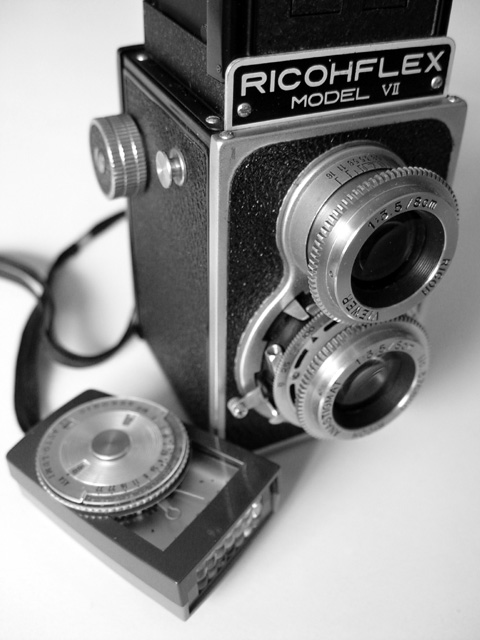 1957 Ricohflex VII.
1957 Ricohflex VII.For such a simple tin box, I was constantly astounded by its marvelous results. It was this Ricohflex that taught me the value of a TLR in formalizing my portrait technique. TLRs have an entirely different feel and process to conventional cameras. Modern SLRs and digitals with rear mounted TFTs are held differently and are engineered for convenience and speed.
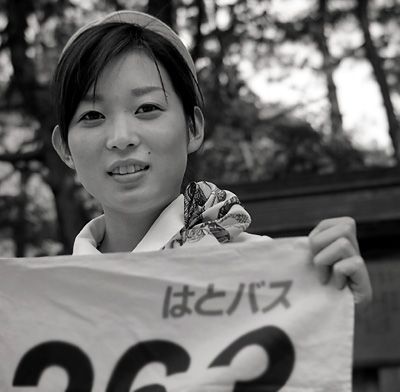 A young girl who works a tourist bus who was very busy but still took the time to pose. T-Max 100.
A young girl who works a tourist bus who was very busy but still took the time to pose. T-Max 100.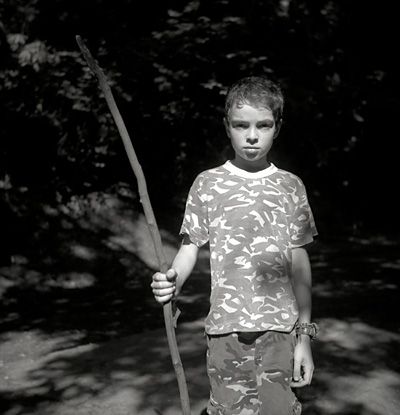 Cammo. T-Max 100.
Cammo. T-Max 100.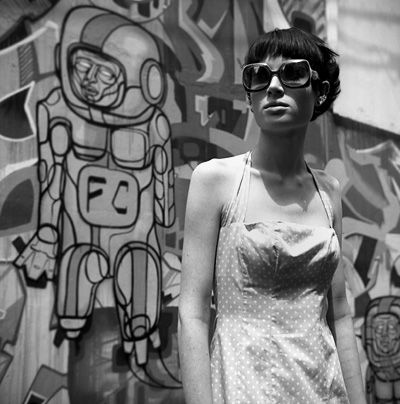 A pretty young girl who told me she wants to be a designer.
A pretty young girl who told me she wants to be a designer.A full manual TLR by comparison is a slow and formal process. Subjects asked to pose - provided they have the time - respond to metering, camera setting, and composition process with a very different attitude than just sticking a lens in their face and tripping the shutter. They pose. They think about posing. While this is perhaps not ideal in all circumstances, it does result in some great output. The VII also has a `sport finder` to be used at arm`s length for those sporty style photographs.
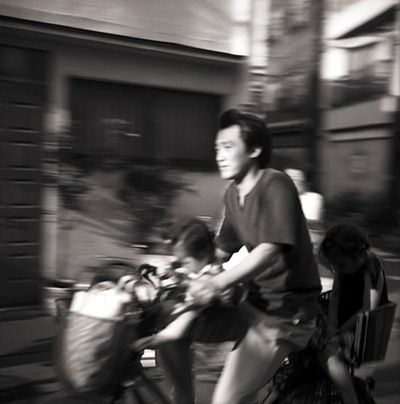 Sporty. T-Max 100.
Sporty. T-Max 100.As an entry level TLR, it is hard to beat. Later Super Ricoflexes have 1/250 (instead of 1/100) as a maximum shutter speed. All are full open at
f3.5. Their best attribute of course is price; reasonable condition VIIs can be found for USD50, and even with the optional 35mm `Color Back` adapter, and perhaps in mint condition, they still sell for under USD100.

Next time: The Polaroid 195. Have fun.
